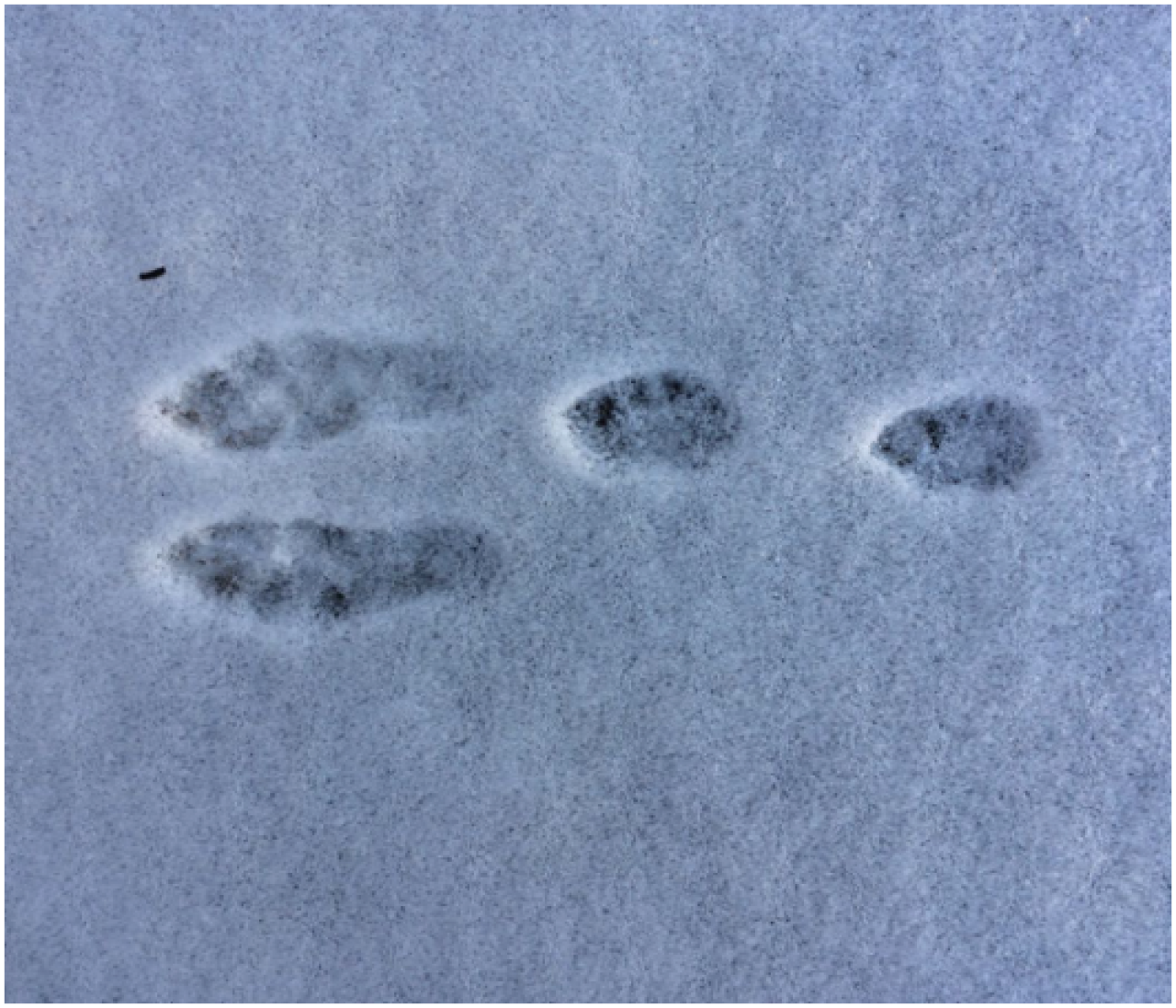Nature notes: Who goes there?

See what FMR's lead ecologist Karen Schik discovered was passing through her yard and neighborhood at night, and learn a few of our most common tracks.
Many of the animals that share our yards and landscapes go unnoticed, passing by at night or when we're not around. A light dusting of snow provides an excellent opportunity for us to get a glimpse of their travels.
While many people are familiar with the cloven hoof tracks of a deer, the footprints of our other furry and feathered critters can be harder to decipher. But with a few tips and a little practice, most of our common visitors can be readily distinguished. Check out our accompanying Flickr album.
Our iconic rodents
Let's start with the ever-present gray squirrels (Sciurus carolinensis). They leave a wide track showing all four feet as they hop. Their tracks are wide and blocky with the long rear feet landing ahead and to the outside of the small and roundish front feet. A red squirrel track is similarly shaped but much smaller.
While the cottontail rabbit (Sylvilagus floridanus) has a similar jumping pattern with the rear feet landing ahead of the front, their foot pattern is tighter – the rear feet are closer together (pictured above) and much longer than a squirrel's.
Dog, coyote or fox?
Let’s move on to a few canids: dog, fox (Vulpes vulpes), and coyote (Canis latrans).
Dogs have a more round print, with toes spread around the rear pad. Coyote toes are more compact, leaving a more oval print. Coyote tracks also tend to follow a straight line, while dogs' are often more wandering.
Red foxes are much smaller than coyotes, averaging 8-15 pounds versus the coyote's 25-30. Red fox tracks are much smaller and they also place the rear foot into the same spot as the front foot, leaving a straight line of evenly spaced prints.
Tiny feet and tunnels
As for small rodents, our most common are white-footed and deer mice (Peromyscus spp,), and voles (Microtus spp and Myodes sp). Mice typically bound over the surface of the snow, their long tail leaving a dragline between the footprints on either side.
Voles prefer to travel in tunnels under the snow, so we see their tracks less often. When they do travel over the snow they also bound or “trot,” but their short tails typically leave little or no mark. (Also, once the snowpack is at least 6 inches deep, you're unlikely to disturb any tunnels beneath your feet while snowshoeing or skiing.)
Learn more
There are many more animals out there, each with footprints to discover! Learn more about wildlife tracks at the Minnesota Wildlife Tracking Project.